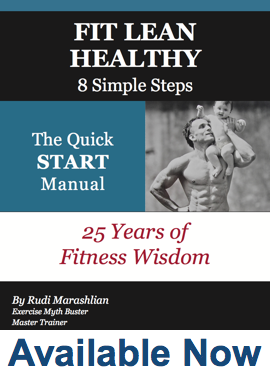In previous articles we’ve talked a lot about the fat-burning qualities of muscle and why strength training is a must for anyone interested in burning fat and reducing their waistline. In this article we’re going to explore the amazing, under-acknowledged and bountiful vitamin D. Why? Well, because recent research has pinpointed vitamin D as a star in our war against flab.
What’s So Great About Vitamin D?
- When you have enough vitamin D in your body, more leptin is released than usual. Leptin tells your body when you’re full. An Australian study showed that people who ate a breakfast high in vitamin D and calcium blunted their appetites for the next 24 hours.
- With enough vitamin D in your bloodstream, fat cells slow their efforts to make and store fat according to Dr. Holick, M.D., Ph.D., author of The Vitamin D Solution. Whenever your vitamin D levels are low, parathyroid hormone (PTH) and calcitrol (another hormone) levels are high and when you have high levels of these two hormones your body tends to hold onto fat. A Norwegian study found that elevated PTH levels increased male risk of becoming overweight by 40 percent!
- Vitamin D can help you lose fat all over your body, but especially from your belly. Studies at the University of Minnesota and Laval University found that vitamin D triggers weight loss primarily around the belly.
The Institute of Medicine recently increased the amount of daily vitamin D to 600 international units (IU) but there are some scientists who argue even that is not enough. The Endocrine Society recently released a revised recommendation of 1,500 to 2,000 IU.
According to Dr. Horlick, obese people (people with a body mass index of above 30)need two to five times the vitamin D of lean people – a dosage that should be monitored by a doctor. This is because fat cells tend to trap vitamin D so less is available in your bloodstream.
So how can you make sure you’re getting enough vitamin D? Going out into the sun might not be enough these days – the pollution in our air filters vitamin D-containing UVB rays and there’s also the worry of skin cancer to consider. There are, however, some healthy, nutrient and vitamin D-rich foods available to help you get more D.
Eggs not only contain vitamin D, they are also packed with protein and have omega-3 fatty acids. Eating an egg for breakfast while reducing overall calories can improve weight loss by 65% and reduce appetite throughout the day (according to two Saint Louis University studies).
Fatty fish includes salmon and mackerel and they contain up to four times the vitamin D of lean or white fish. These fatty fish varieties also offer high levels of omega-3 fatty acids. Go for the wild varieties – a Boston University study found that farmed salmon has just 25 percent of the vitamin D of wild salmon – wild salmon get their vitamin D from eating nutrient-rich plankton while farmed salmon eat feed pellets.
Most milk products contain calcium as well as vitamin D – we already know how calcium plus vitamin D can blunt the appetite for up to 24 hours – so this could be a good choice to pump up vitamin D levels for people who can tolerate dairy products.
VITAMIN D SUPPLEMENTS:
Vitamin D supplements are fine but, it appears vitamin D works best in combination with other nutrients (like calcium), so your best bet is to eat whole foods rich in this awesome vitamin rather than take a bunch of pills.
Obviously, we’re not advocating you go nuts and eat a dozen eggs for breakfast, but modifying your diet a bit to include a couple of eggs, fruit and low fat yogurt for breakfast along with some healthy servings of fatty fish throughout the week can’t hurt. If you’re concerned about your vitamin D levels, see your doctor or nutritionist.
A balanced exercise plan along with a healthy, nutrition-dense diet will go a long way to improving your waistline, energy levels and your overall good health and longevity.
Tracey Marashlian






Great article, will eat more eggs to drop mire fat